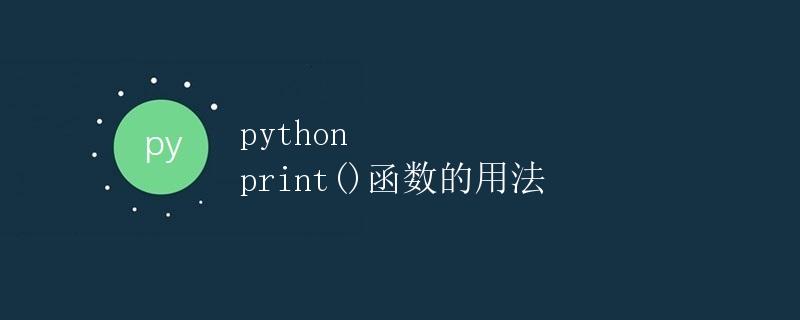Python print()函数的用法

在Python中,print()函数是一个用于输出内容的内置函数,非常常用。通过print()函数,我们可以将数据、变量、字符串等内容输出到屏幕或者文件中。本文将详细介绍print()函数的用法,包括基本用法、格式化输出、重定向输出等内容。
基本用法
print()函数的基本语法如下:
print(value1, value2, ..., sep=' ', end='\n', file=sys.stdout, flush=False)
其中,参数说明如下:
value1, value2, ...:要输出的内容,可以是字符串、变量、数字等。sep:用于分隔多个要输出的内容,默认为一个空格。end:指定输出的结尾,默认为换行符\n。file:指定输出的文件对象,默认为标准输出流。flush:决定是否立即将输出缓冲区中的内容输出,默认为False。
下面是一些print()函数的基本用法示例:
print("Hello, World!")
# 输出:Hello, World!
name = "Alice"
age = 20
print("My name is", name, "and I am", age, "years old.")
# 输出:My name is Alice and I am 20 years old.
格式化输出
除了基本用法外,print()函数还支持格式化输出,可以通过占位符来控制输出内容的格式。常用的占位符包括:
%s:字符串%d:整数%f:浮点数
示例代码如下:
name = "Bob"
age = 25
height = 1.75
print("My name is %s, I am %d years old, and my height is %.2f meters." % (name, age, height))
# 输出:My name is Bob, I am 25 years old, and my height is 1.75 meters.
另一种格式化输出的方法是使用format()方法:
name = "Charlie"
age = 30
height = 1.80
print("My name is {}, I am {} years old, and my height is {:.2f} meters.".format(name, age, height))
# 输出:My name is Charlie, I am 30 years old, and my height is 1.80 meters.
重定向输出
除了输出到屏幕外,print()函数还可以将内容输出到文件中。我们可以通过指定file参数来实现重定向输出。示例代码如下:
with open("output.txt", "w") as f:
print("This is a test output.", file=f)
在执行完上述代码后,会在当前目录下生成一个名为output.txt的文件,并将内容This is a test output.写入到文件中。
总结
通过本文的介绍,相信大家对print()函数的用法有了更深入的了解。print()函数是Python中一个非常重要的函数,能够帮助我们输出调试信息、结果等内容。熟练使用print()函数将有助于提高我们的编程效率。
 极客教程
极客教程